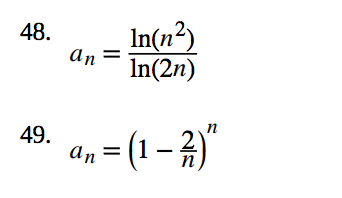

First, we show that the sequence is monotonically decreasing for all.

#PROVE A RECURSIVE SEQUENCE CONVERGES HOW TO#
Find the first ten terms of p n p n and compare the values to π. Before giving the formal definition of convergence of a sequence, let us take a look at the behaviour of the sequences. Learn how to convert between recursive and explicit formulas of arithmetic sequences. MaProve that the sequence be defined by the recursive relationship, converges and find the limit of the sequence. To find an approximation for π, π, set a 0 = 2 + 1, a 0 = 2 + 1, a 1 = 2 + a 0, a 1 = 2 + a 0, and, in general, a n + 1 = 2 + a n. Therefore, being bounded is a necessary condition for a sequence to converge. For example, consider the following four sequences and their different behaviors as n → ∞ n → ∞ (see Figure 5.3): Since a sequence is a function defined on the positive integers, it makes sense to discuss the limit of the terms as n → ∞. Limit of a SequenceĪ fundamental question that arises regarding infinite sequences is the behavior of the terms as n n gets larger. a1 1, an+1 2 + cos(n) n an a 1 1, a n + 1 2 + cos ( n) n a n. 8 for first-order logic provided the theoretical underpinning for automated theorem proving. Determine the convergence of the sequence defined by nNan n N a n such as. In a regular proof of a limit, we choose a distance (delta) along the horizontal axis on either side of the value of x, but sequences are only valid for n equaling positive integers, so we choose M. Find an explicit formula for the sequence defined recursively such that a 1 = −4 a 1 = −4 and a n = a n − 1 + 6. Since Natalia is about to write a Recursive Formula, i. M is a value of n chosen for the purpose of proving that the sequence converges.


 0 kommentar(er)
0 kommentar(er)
